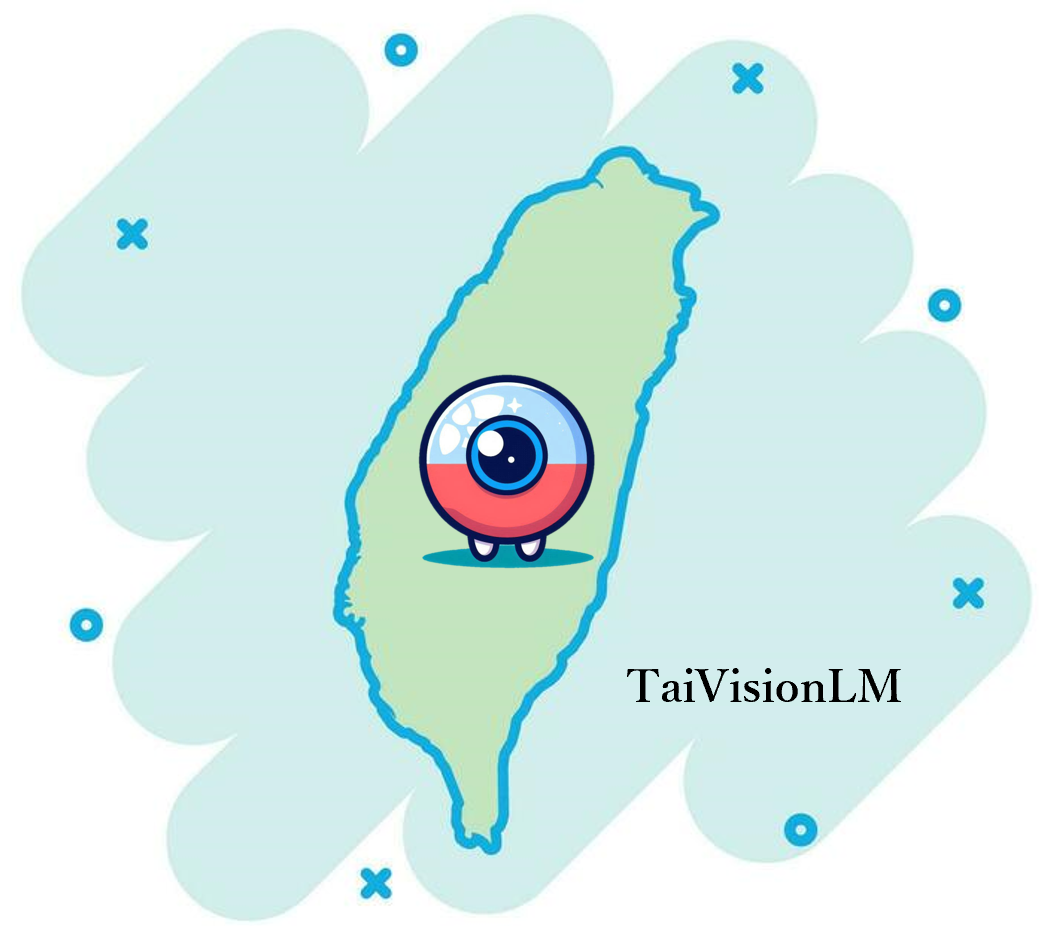Model Card for Model ID
Model Details
English
TaiVisionLM: The First of Its Kind! 🚀
🌟 This is a small (only 1.2B parameters) visual language model on Hugging Face that responds to Traditional Chinese instructions given an image input! 🌟
✨ Developed compatible with the Transformers library, TaiVisionLM is quick to load, fine-tune, and use for lightning-fast inferences without needing any external libraries! ⚡️
Ready to experience the Traditional Chinese visual language model? Let's go! 🖼️🤖
繁體中文
台視: 台灣視覺語言模型!! 🚀
🌟 TaiVisionLM 是一個小型的視覺語言模型(僅有 12 億參數),可以根據圖像輸入來回覆繁體中文指令!🌟
✨ TaiVisionLM 可以用 transformers 載入、微調和使用!⚡️
準備好體驗"臺視"了嗎?讓我們開始吧!🖼️🤖
Model Description
English
This model is a multimodal large language model that combines SigLIP as its vision encoder with Tinyllama as its language model. The vision projector connects the two modalities together. Its architecture closely resembles PaliGemma.
Here's the summary of the development process:
- Unimodal pretraining
- In this stage, instead of pretraining both modalities from scratch, I leverage the image encoder from google/siglip-base-patch16-224-multilingual and the language model trained by ourselves (https://huggingface.co/benchang1110/Taiwan-tinyllama-v1.0-chat).
- Feature Alignment
- I train the vision projector and language model using LoRA using 1B image-text pairs to align visual and textual features.
- Task Specific Training
- The aligned model undergoes further training for tasks such as short captioning, detailed captioning, and simple visual question answering. We will undergo this stage after the dataset is ready!
- Developed by: benchang1110
- Model type: Image-Text-to-Text
- Language(s) (NLP): Traditional Chinese
繁體中文
這個模型是一個多模態的語言模型,結合了 SigLIP 作為其視覺編碼器,並使用 Tinyllama 作為語言模型。視覺投影器將這兩種模態結合在一起。
其架構與 PaliGemma 非常相似。
以下是開發過程的摘要:
- 單模態預訓練
- 在這個階段,我利用了 google/siglip-base-patch16-224-multilingual 的圖像編碼器,以及我們自己訓練的語言模型(Taiwan-tinyllama-v1.0-chat)。
- 特徵對齊
- 我使用了10億個圖片和文本的配對來訓練圖像投影器 (visual projector),並使用 LoRA 來微調語言模型的權重。
- 任務特定訓練
- 對齊後的模型將進行進一步的訓練,針對短描述、詳細描述和簡單視覺問答等任務。我們將在數據集準備好後進行這一階段的訓練!
- 創作者: benchang1110
- 模型類型: Image-Text-to-Text
- 語言: Traditional Chinese
How to Get Started with the Model
English
In Transformers, you can load the model and do inference as follows:
IMPORTANT NOTE: TaiVisionLM model is not yet integrated natively into the Transformers library. So you need to set trust_remote_code=True when loading the model. It will download the configuration_taivisionlm.py, modeling_taivisionlm.py and processing_taivisionlm.py files from the repo. You can check out the content of these files under the Files and Versions tab and pin the specific versions if you have any concerns regarding malicious code.
from transformers import AutoProcessor, AutoModelForCausalLM, AutoConfig
from PIL import Image
import requests
import torch
config = AutoConfig.from_pretrained("benchang1110/TaiVisionLM-base",trust_remote_code=True)
processor = AutoProcessor.from_pretrained("benchang1110/TaiVisionLM-base",trust_remote_code=True)
model = AutoModelForCausalLM.from_pretrained("benchang1110/TaiVisionLM-base",trust_remote_code=True,torch_dtype=torch.float16,attn_implementation="sdpa").to('cuda')
model.eval()
url = "https://media.wired.com/photos/598e35fb99d76447c4eb1f28/master/pass/phonepicutres-TA.jpg"
image = Image.open(requests.get(url, stream=True).raw).convert("RGB")
text = "描述圖片"
inputs = processor(text=text,images=image, return_tensors="pt",padding=False).to('cuda')
outputs = processor.tokenizer.decode(model.generate(**inputs,max_length=512)[0])
print(outputs)
中文
利用 transformers,可以用下面程式碼進行推論:
重要通知: 台視 (TaiVisionLM)還沒被整合進transformers,因此在下載模型時要使用 trust_remote_code=True,下載模型將會使用configuration_taivisionlm.py、 modeling_taivisionlm.py 和 processing_taivisionlm.py 這三個檔案,若擔心有惡意程式碼,請先點選右方 Files and Versions 來查看程式碼內容。
from transformers import AutoProcessor, AutoModelForCausalLM, AutoConfig
from PIL import Image
import requests
import torch
config = AutoConfig.from_pretrained("benchang1110/TaiVisionLM-base",trust_remote_code=True)
processor = AutoProcessor.from_pretrained("benchang1110/TaiVisionLM-base",trust_remote_code=True)
model = AutoModelForCausalLM.from_pretrained("benchang1110/TaiVisionLM-base",trust_remote_code=True,torch_dtype=torch.float16,attn_implementation="sdpa").to('cuda')
model.eval()
url = "https://media.wired.com/photos/598e35fb99d76447c4eb1f28/master/pass/phonepicutres-TA.jpg"
image = Image.open(requests.get(url, stream=True).raw).convert("RGB")
text = "描述圖片"
inputs = processor(text=text,images=image, return_tensors="pt",padding=False).to('cuda')
outputs = processor.tokenizer.decode(model.generate(**inputs,max_length=512)[0])
print(outputs)
Training Procedure
The following training hyperparameters are used in feature alignment and task specific training stages respectively:
- Feature Alignment
| Data size | Global Batch Size | Learning Rate | Epochs | Max Length | Weight Decay |
|---|---|---|---|---|---|
| 1M | 16 | 5e-5 | 1 | 2048 | 1e-5 |
We use full-parameter finetuning for the projector and apply LoRA to the language model.
Compute Infrastructure
- Feature Alignment 1xV100(32GB), took approximately 16 GPU hours.
- Downloads last month
- -

